George Tice - Gifted Gallery
- Lilium
- Sep 28, 2022
- 7 min read

George Tice, born 13 October 1938, is an American photographer. His work depicts a broad range of American life, landscape, and urban environment, mostly photographed in his native New Jersey. He has lived all his life in New Jersey, except for his service in the U. S. Navy, a brief period in California, a fellowship in the United Kingdom, and summer workshops in Maine, where he taught at the Maine Photographic Workshops, now the Maine Media Workshops.

Tice is the son of a college-educated New Jerseyan, William S. Tice, and Margaret Robertson. His first contact with photography was in the albums of family photographs belonging to his father, and this gave him the desire to create images of his own. He began with a Kodak Brownie. In 1953, having bought a Kodak Pony, which gave him some control over exposure and focus, and a Kodak developing kit, he began to advance his craft. He also joined the Carteret Camera Club. Tice's photographs of homeless men on the Bowery won second place in the black and white print competitions. He decided at this point to make photography his career.
In 1955 he attended the Newark Vocational and Technical High School, where he briefly studied commercial photography under Harve Wobbe. When he turned sixteen, he quit school and took a job as a darkroom assistant for Classic Photo, a portrait studio in Newark. He also worked as a stock boy at Kreske's Department Store in Newark, then as an office boy in the circulation department of the Newark Evening News. It was at this job he learned about the death of the actor James Dean through a clipping about his death. Tice later adopted Dean as one of his subjects in Hometowns: An American Pilgrimage.

In 1956 Tice enlisted in the United States Navy, in which he rose to the rank of Photographer's Mate Third Class. After boot camp and two years at Naval Air Station Memphis, he was transferred to sea duty aboard the aircraft carrier, USS Wasp (CV-18). One of the photographs he made on board, Explosion Aboard the U.S.S. Wasp, 1959, was published on the front page of the New York Times.
Edward Steichen, then Director of Photography at the Museum of Modern Art, was struck by the image and requested a print for the Museum collection. In that same year Tice received his honourable discharge.
In 1960, now a civilian, Tice joined the Vailsburg Camera Club and took a job as a family portrait photographer for Americana Portraits. As an active member of the club, he exhibited in international salons. That same year he began to make short trips to Lancaster County, Pennsylvania to photograph the Amish and Mennonite communities, using 35mm and medium format cameras.
In 1964 he began his series of tree photographs. By then he had learned all he could from the disciplines of the camera club and brought his involvement to an end. Tice had his first solo exhibition at the Underground Gallery, New York.
In the same year he decided to move with his family to California, where he continued his work in family portraits, but pursuing artistic projects like his series on the ghost town of Bodie, California on the edge of the Sierra Nevada range.
When his wife, Marie, became homesick, he returned to New Jersey, where, as he had learned, the family portrait business was considerably more profitable than on the West Coast. In 1967 he bought a 4 x 5 Deardorff view camera and made studies of ice formations. In the same year he traded in his 4 x 5 for an 8 x 10 view camera and began his aquatic plant series. He also produced his first photographs of Paterson, New Jersey, which became the subject of two books and exhibitions, Paterson and Paterson II. The following year he published The Amish Portfolio, a set of twelve, limited-edition prints with an introduction by Jacob Deschin. With his advance from Doubleday for Fields of Peace he bought a brand new 8 x 10 Deardorff, which remains his preferred instrument today.

Tice met Lee Witkin in 1968 and used his knowledge of photography and its history to help him establish the Witkin Gallery in New York, one of the first successful galleries of photographic prints as fine art. He issued the portfolio, Trees, taught a workshop at Aspen, Colorado, and began to experiment with platinum printing, a lost art since the First World War, when wartime platinum prices forced the manufacturers of the special printing paper out of business. The only documentation of the process consisted of William Willis' original patents, which did not provide enough information for Tice to prepare the paper and use it to make prints. Tice had to reinvent the platinum printing for himself. He published what he learned in an article, "The Lost Art of Platinum," in the December 1970 issue of the British photography journal, Album, edited by Bill Jay. Tice's experimentation with early photographic processes continued in 1972 with his creation of a photogenic drawing of leaves printed in a contact frame exposed to sunlight onto hand-sensitised paper coated with diluted silver nitrate, in the manner of William Henry Fox Talbot, producing a Calotype negative.

In 1970 Doubleday published Tice's first book, Fields of Peace: A Pennsylvania German Album, with text by Millen Brand. He began photographing coastal Maine this year and began teaching at the New School for Social Research. That year he also traveled to London and Paris with Lee Witkin in search of material for the Witkin Gallery.
In 1971, Tice issued his portfolio, Bodie, with an introduction by Lee Witkin, printed an Evans portfolio from lantern slides, and published, again with Doubleday, Goodbye River Goodbye, with poetry by George Mendoza. In 1972 Life magazine sent him on assignment for the article "Home to Iowa." Rutgers University Press published Paterson, and the Metropolitan Museum of Art presented a solo exhibition, Paterson, New Jersey. Doubleday published Seacoast, Maine: People and Places, with a text by Martin Dibner.

Edward Steichen, then in the last year of his life, appointed Tice as printer of his negatives, a duty Tice continued until 1998, printing several important portfolios of Steichen's work. Tice also made prints for portfolios of photographs by Frederick H. Evans, Francis Bruguière, and Edward Weston, issued by the Witkin Gallery.
Ansel Adams recommended Tice for a commission by the Field Museum of Natural History, Chicago, to make two sixty-foot murals of Sapelo Island, Georgia. Life magazine sent Tice to Hutchinson, Kansas to contribute to the Special Report, "One Day in the Life of America." The Witkin Gallery presented a twenty-year retrospective of Tice's work in 1975, accompanied by the book, George A. Tice, Photographs: 1953-1973.
Tice was established as a classic observer of the American landscape, both urban and rural, and the world of the working American. From then on, he explored his essential subjects in further depth, continued to illustrate the paths of change in America, and to extend them with increased attention to human subjects. Not only did he train his eye and technique on the structures and environments Americans had created for themselves over centuries to live and work in, he began to examine people directly—always in the context of their environment, growth, and history, and always with a sympathetic spirit of inquiry. Over the next decades he developed as a photographer-historian—a quality he had already shown in his interest in the history of photography as a collector and in his study and adoption of historical techniques.
Around 1976/77 Tice acquired a Fujica soft-focus lens, and in this he found another avenue to explore the history of photography and to invent it once again for his own artistic purposes. He was fascinated by the firm contours this lens resolved amidst a cloudy glow which emanated from the figure—an effect fundamentally different from those of the methods employed by modern photographers. Over the next two years he made a series of soft-focus photographs of a girlfriend, Deborah, and three white cats, which belonged to one of his daughters.
Urban Landscapes: A New Jersey Portrait followed in 1976, again from the Rutgers University Press, an expansion of Tice's vision of the gritty cities of industrial New Jersey. As in Paterson, Tice explored scenes of the working man's environment that survived only precariously at the time, soon to disappear forever. Although his subject-matter, technique, and style extend far beyond that, almost to the point of universality, the urban scene of New Jersey remains his most familiar vein.
Tice's interest in people manifested itself in a small book unlike any he had produced before: Artie Van Blarcum: An Extended Portrait. Artie was a loyal member of the Tri-County Camera Club. When Tice decided to create a book about him, he reluctantly allowed Tice to follow him around as a witness to his daily life.
In 1982 Tice printed a Steichen portfolio, Steichen: Twenty-Five Photographs, and another retrospective monograph, Urban Romantic: The Photographs of George Tice, issued by the esteemed publisher, David R. Godine, marking the beginning of Tice's aim to attempt to equal the quality of his original prints in his books. In 1983 Tice turned to a new subject closely related to Lincoln. He traveled to the Midwest to photograph James Dean's Fairmount, Indiana, Ronald Reagan's Dixon, Illinois, and Mark Twain's Hannibal, Missouri. In 1987 Tice was inducted into the New Jersey Literary Hall of Fame and awarded the "Michael," a prize designed by Michael Graves. Hometowns: An American Pilgrimage, was published by New York Graphic Society in 1988.
In 2010 filming began for a documentary about his career, George Tice: Seeing Beyond the Moment, by New Street Productions, premiered in 2013 at the Newark Museum as part of his seventy-fifth birthday celebrations, which included exhibitions at William Paterson University, The Newark Museum, the Scott Nichols Gallery, the Nailya Alexander Gallery, and the Point Light Gallery. In October 2015 the Lucie Foundation honoured Tice with their Lucie Award for Lifetime Achievement at Carnegie Hall.
Reading Recommendations & Content Considerations

George Tice:
1962-2000




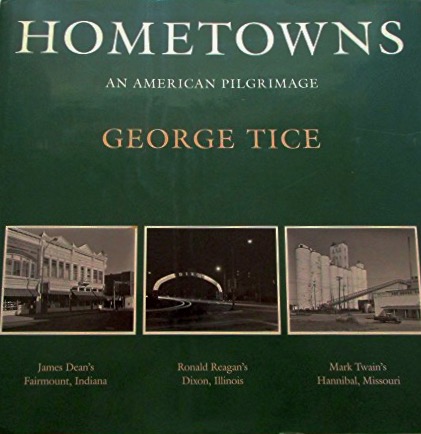





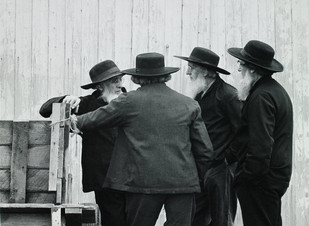





















































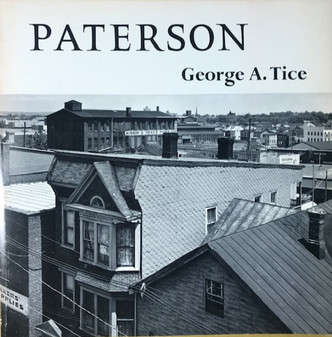





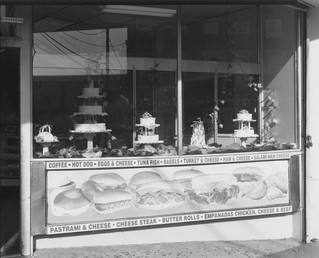





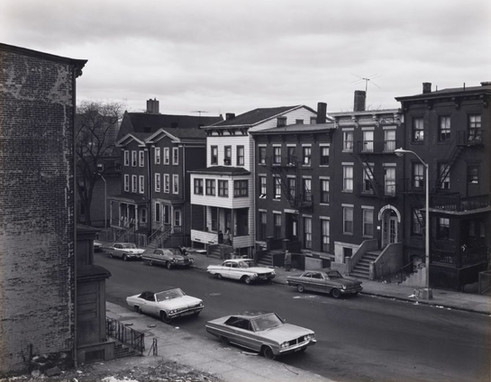

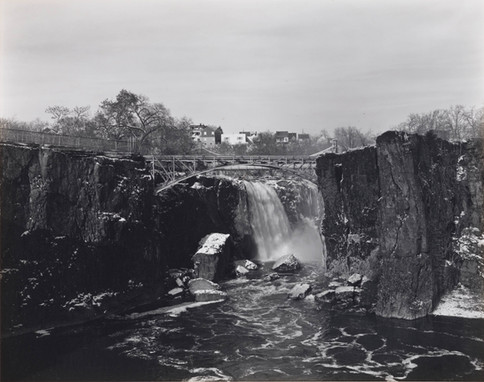











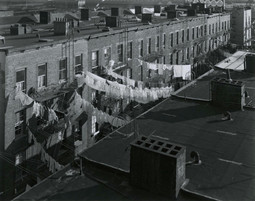












































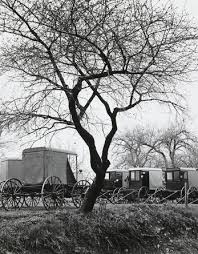















































































Comments